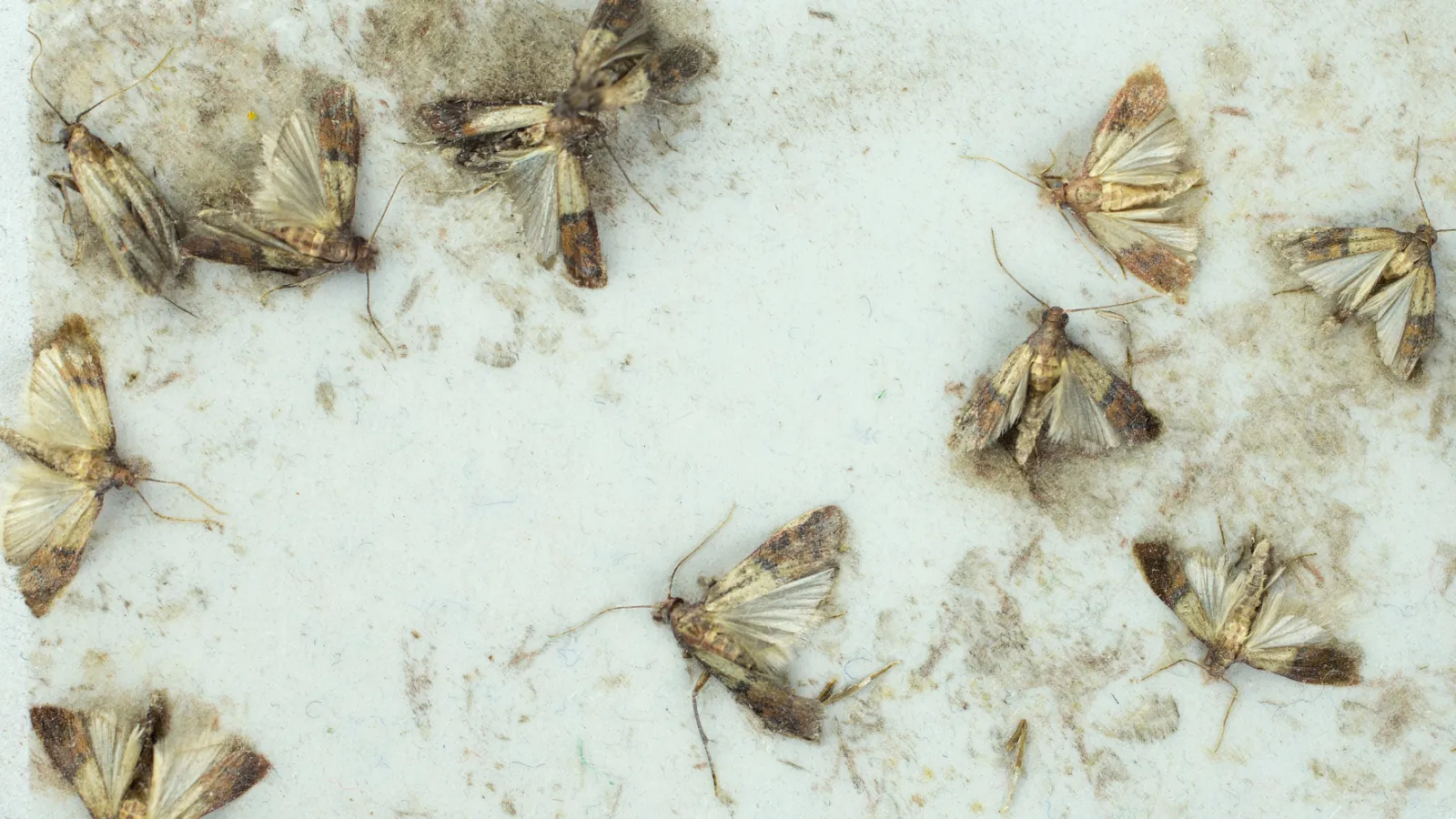
Pantry Pests
Latin Name: Lasioderma serricorne
Pantry pests are a group of insects commonly found in kitchens and food storage areas. These pests infest dry, stored food products like flour, rice, cereal, nuts, dried fruits, spices, and pet food. Some of the most common pantry pests include:
Indian Meal Moths: These moths are small with reddish-brown wings. They lay eggs in food, and their larvae spin silken webs, contaminating the food.
Flour Beetles: These tiny beetles, such as the red flour beetle and confused flour beetle, are known for infesting flour, cereals, and other dry goods.
Sawtoothed Grain Beetles: These slender beetles often invade cereals, pasta, and other packaged goods.
Weevils: Grain weevils, rice weevils, and bean weevils infest whole grains and seeds, with the adults and larvae feeding on the products.
Cigarette and Drugstore Beetles: These pests target dried herbs, spices, and even non-food items like tobacco or dried flowers.
How Pantry Pests Invade
- Infested Products: Pantry pests often enter homes through already infested products bought from the store. Eggs or larvae might be hidden in packaging or food.
- Cracks and Openings: Adult insects can enter the home through tiny cracks, windows, or doors and make their way to food storage areas.
- Recycled Packaging: Insects may hide in cardboard or paper bags, especially if these materials were stored in infested areas.
- Proximity to Garbage: Improperly sealed garbage bins or compost can attract pests, which then find their way to the pantry.
Signs of Infestation
- Webbing: Silk-like threads in food containers indicate the presence of Indian meal moths.
- Small Holes: Tiny holes in packaging suggest the activity of weevils or beetles.
- Movement: Seeing adult insects crawling or flying around food storage areas.
- Clumped Food: Infested food may clump together due to webbing or moisture caused by pests.
Pantry Pest Prevention
- Inspect packages before purchase for signs of damage or infestation.
- Store food in airtight containers made of glass, plastic, or metal.
- Clean pantry shelves regularly, removing crumbs and spilled food.
- Use older food first to avoid prolonged storage that attracts pests.
- Dispose of infested items immediately in a sealed bag outside the home.
By taking these measures, you can reduce the risk of pantry pests invading your food storage areas and maintain a pest-free kitchen.
